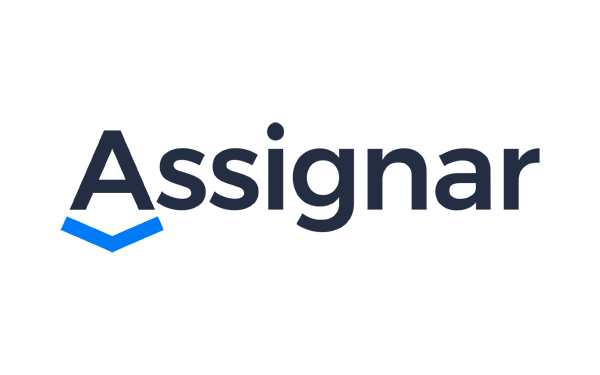
I had the opportunity to attend the Safety Damage Prevention Conference hosted by National Utility Contractors Association (NUCA). The event provided deep insights into key aspects of the utility contracting industry, including risk and liability, proactive documentation, education for safety, and engaging the industry’s workforce. For those that couldn’t attend here’s a breakdown of the core takeaways:
1. Risk and Liability: Managing the Stakes is Getting Harder
One of the recurring themes of the conference was the need to address liability and financial vulnerability—two critical concerns for those in the utility contracting space. Whether it’s the financial impact of making the wrong decision or the personal responsibility of protecting people on the job site, the importance of proactive risk management cannot be overstated.
To illustrate this, consider the saying, “a picture is worth a thousand words”—and in our industry, it’s more than just a saying, it’s a financial reality. On-site pictures and documentation can be the difference between avoiding or facing thousands of dollars in claims and litigation. For example, pre-site inspections that include detailed photos and notes can help identify potential hazards before any work begins. In the case of an accident or dispute, those documented images become your defense—proving what was on-site, what was inspected, and what safety measures were in place
Without these proactive steps, the lack of documentation could leave a contractor open to disputes, misunderstandings, or worse, a costly legal battle. Properly archived images from these inspections not only protect the crew but also provide a clear, defensible record that can be crucial in avoiding financial setbacks down the road.
Related to the topic of liability and risk that emerged was utility line interference and the challenges of preventing utility accidents. These incidents are complex and often involve multiple stakeholders, so collaboration within the industry is crucial. But perhaps the most important point was the reminder that strong documentation and SOPs are not just useful tools—they are essential in driving industry standards forward and preventing accidents before they occur.
2. Proactive Documentation: A Safety Tool, Not Just a Safety Net
Proactive documentation isn’t just about having the right paper trail in case something goes wrong; it’s about setting your team up for success by providing them with the resources and knowledge they need to make informed, safe decisions on the job. Think of documentation as a tool—and just like any other tool, it should be something that’s easily accessible, accurate, and used regularly.
For instance, access to real-time data on equipment safety checks, maintenance schedules, and more—without having to sift through paper forms or rely on memory is becoming more relevant for jobsite safety and success. This ensures that safety documentation is not only easy to access but also up-to-date, reducing errors and promoting better decision-making.
Handing over a comprehensive, up-to-date Standard Operating Procedure (SOP) isn’t enough if it’s buried in a dusty truck or left out of reach. Documentation needs to be embedded in the workflow and delivered in a format that’s intuitive and easy for the crew to interact with, right when they need it most.
Another critical part of this process is creating safety forms, like JSAs, part of the daily routine. These forms shouldn’t just be a formality; they should be mandatory and easy to complete. By making documentation a habit, workers become more aware of potential hazards and the steps necessary to avoid them.
One of the most effective ways to encourage consistent documentation is through positive reinforcement. Rewarding workers for consistently filling out safety forms and adhering to procedures helps create a culture of safety, where the act of documentation becomes ingrained in daily practices. Over time, this builds habits that prioritize safety at every level of the job. This can’t just be a “check-the-box” form; it needs to be easily accessible and part of the daily routine.
Positive reinforcement also plays a key role in ensuring documentation is used consistently. Encourage your team to embrace these habits by offering feedback and praise when they complete safety documentation accurately. The more these tasks become second nature, the less likely you’ll see slips in safety protocol, and the stronger the overall culture of safety will become. For instance, if a worker completes a JSA or utilizes the app for equipment checks, acknowledge their effort. This small step of recognition can help transform documentation from a chore into an integral part of their daily responsibilities.
The possibilities for proactive documentation are endless. Whether it’s making SOPs easier to navigate, ensuring forms are filled out before the job starts, or creating new ways to track equipment and safety measures, these practices help build a culture of safety that employees trust. It’s all about giving your crew every tool imaginable to keep them informed, safe, and confident on the job site.
3. Education for Site Safety: Textbooks and classrooms aren’t getting the job done
The conference highlighted how crucial education and hands-on training are for maintaining and improving safety standards in the industry. One of the standout topics was the Live Trench Training Program – driven by NUCAs very own Mandi Oldham and Jimmy Day, designed to bring industry-wide safety standards to life in an engaging and scalable way.
This program provided workers with real-world, hands-on experience in high-risk scenarios, simulating the challenges they might face in the field. Unlike traditional classroom settings, this immersive training allows workers to develop the confidence and competence needed to make informed decisions in stressful situations.
One of the brilliant outcomes of this program lies in its ability to not only educate current professionals but also reach out to the next generation of workers. High school students and young professionals participated in the training, not only learning about safety protocols but also seeing firsthand how they can build a long-term career in the utility contracting industry. The team went as far as establishing a scholarship program for these young professionals, and they are continuing to develop new ways to engage with the younger generation.
A somewhat off-the-cuff topic that emerged during the conference was the aging workforce. As experienced professionals near retirement, the industry is facing a significant knowledge gap. While replacing retiring workers is a priority, the real challenge lies in how we can attract and retain younger professionals to ensure the industry’s future growth.
For many kids, this is their first interaction with hands-on training in the industry. That means the first thing they are learning is jobsite safety, which is an amazing way to advance safety in the industry from a long term perspective. By offering this kind of education, the industry not only improves its safety standards but also inspires the next generation to enter and thrive in this vital field.
Conclusion: Shaping the Future of Utility Contracting
The insights from the Safety Damage Prevention Conference underscore the importance of evolving the utility contracting industry to meet modern demands. From managing liability risks and implementing proactive documentation to educating the workforce through live, hands-on training, it’s clear that we must invest in the future.
As the industry faces the challenges of an aging workforce, it is more important than ever to embrace new technologies, train the next generation, and foster a culture of safety and innovation. By doing so, we can ensure the long-term success and safety of the industry while continuing to attract the talent necessary to thrive in an evolving landscape.
About Assignar
Assignar is a leading operations and workforce management platform designed for the construction industry. Its cloud-based solution helps contractors improve productivity, compliance, and safety by streamlining scheduling, resource management, and data collection. Assignar enables contractors to manage field operations more effectively, gain actionable insights, and deliver projects on time. Learn more at assignar.com.
For more information about the Top Construction Technology Firms list, contact surveys@magazinexperts.com.





